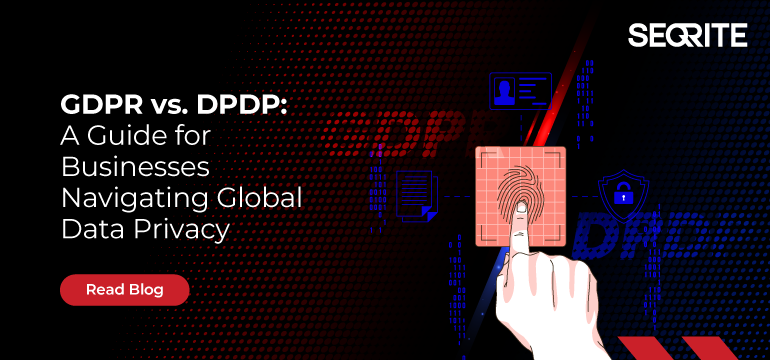In today’s high-stakes digital arena, data is the lifeblood of every enterprise. From driving strategy to unlocking customer insights, enterprises depend on data like never before. But with significant volume comes great vulnerability.
Imagine managing a massive warehouse without labels, shelves, or a map. That’s how most organizations handle their data today—scattered across endpoints, servers, SaaS apps, and cloud platforms, much of it unidentified and unsecured. This dark, unclassified data is inefficient and dangerous.
At Seqrite, the path to resilient data privacy and governance begins with two foundational steps: Data Discovery and Classification.
Shedding Light on Dark Data: The Discovery Imperative
Before protecting your data, you need to know what you have and where it resides. That’s the core of data discovery—scanning your digital landscape to locate and identify every piece of information, from structured records in databases to unstructured files in cloud folders.
Modern Privacy tools leverage AI and pattern recognition to unearth sensitive data, whether it’s PII, financial records, or health information, often hidden in unexpected places. Shockingly, nearly 75% of enterprise data remains unused, mainly because it goes undiscovered.
Without this visibility, every security policy and compliance program stands on shaky ground.
Data Classification: Assigning Value and Implementing Control
Discovery tells you what data you have. Classification tells you how to treat it.
Is it public? Internal? Confidential? Restricted? Classification assigns your data a business context and risk level so you can apply the right protection, retention, and sharing rules.
This is especially critical in industries governed by privacy laws like GDPR, DPDP Act, and HIPAA, where treating all data the same is both inefficient and non-compliant.
With classification in place, you can:
- Prioritize protection for sensitive data
- Automate DLP and encryption policies
- Streamline responses to individual rights requests
- Reduce the clutter of ROT (redundant, obsolete, trivial) data
The Power of Discovery + Classification
Together, discovery and classification form the bedrock of data governance. Think of them as a radar system and rulebook:
- Discovery shows you the terrain.
- Classification helps you navigate it safely.
When integrated into broader data security workflows – like Zero Trust access control, insider threat detection, and consent management – they multiply the impact of every security investment.
Five Reasons Enterprises Can’t Ignore this Duo
- Targeted Security Where It Matters Most
You can’t secure what you can’t see. With clarity on your sensitive data’s location and classification, you can apply fine-tuned protections such as encryption, role-based access, and DLP—only where needed. That reduces attack surfaces and simplifies security operations.
- Compliance Without Chaos
Global data laws are demanding and constantly evolving. Discovery and classification help you prove accountability, map personal data flows, and respond to rights requests accurately and on time.
- Storage & Cost Optimization
Storing ROT data is expensive and risky. Discovery helps you declutter, archive, or delete non-critical data while lowering infrastructure costs and improving data agility.
- Proactive Risk Management
The longer a breach goes undetected, the more damage it does. By continuously discovering and classifying data, you spot anomalies and vulnerabilities early; well before they spiral into crises.
- Better Decisions with Trustworthy Data
Only clean, well-classified data can fuel accurate analytics and AI. Whether it’s refining customer journeys or optimizing supply chains, data quality starts with discovery and classification.
In Conclusion, Know your Data, Secure your Future
In a world where data is constantly growing, moving, and evolving, the ability to discover and classify is a strategic necessity. These foundational capabilities empower organizations to go beyond reactive compliance and security, helping them build proactive, resilient, and intelligent data ecosystems.
Whether your goal is to stay ahead of regulatory demands, reduce operational risks, or unlock smarter insights, it all starts with knowing your data. Discovery and classification don’t just minimize exposure; they create clarity, control, and confidence.
Enterprises looking to take control of their data can rely on Seqrite’s Data Privacy solution, which delivers powerful discovery and classification capabilities to turn information into an advantage.








